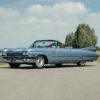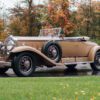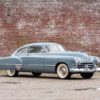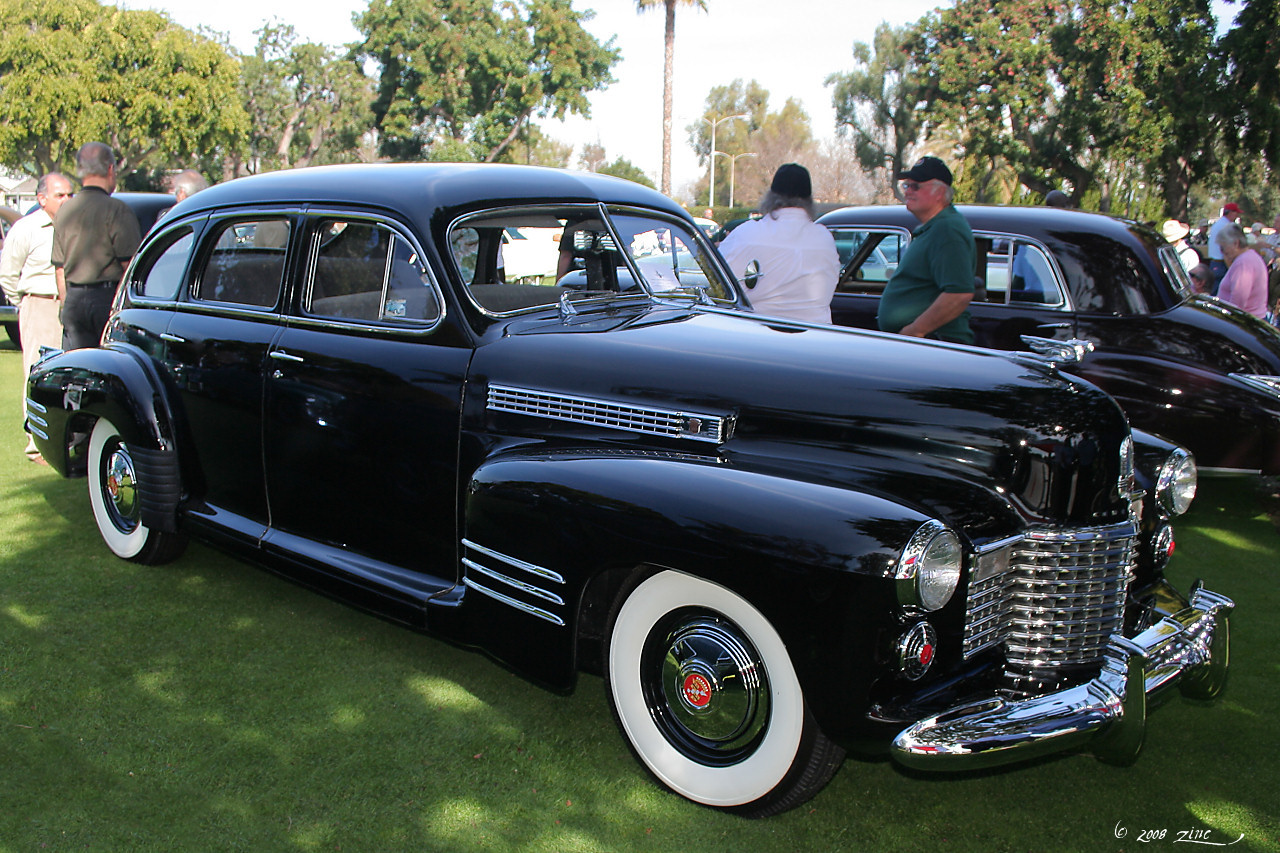Cadillac Models & History (1943-45 )
Afterthe abbreviated ’42 model run, during which only 16,511 units were produced, Cadillac became a major cog in the wheel of America’s war machine. There is much justification for saying that the ’43 Cadillac was the highly maneuverable M-24 light tank (sometimes called the M-24 Chaffee) that utilized two Cadillac V-8s and two Hydra-Matic transmissions — each powering one track of the tank. The two driveline systems were coordinated and connected by a spider gear. Inside each tank, a plaque proudly proclaimed that this was a product of Cadillac. Cadillac Division received the Army-Navy “E” Award for excellence in the production of war equipment. The reliable V-8 engines were also used on the M-19 anti-aircraft gun carriage, and Cadillac engines and transmissions powered the M-5 light tanks, the predecessors of the M-24, as well.
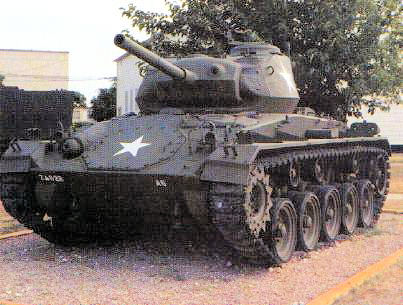
Ironically, Cadillac already had quite a history in warfare and armaments. The Davidson-Cadillac — capable of a sustained 113 km/h when the roads allowed — was America’s first military armored car. Slightly modified Cadillac automobiles had been used in the military action against Pancho Villa in 1916, and Cadillac had been chosen as the standard officer’s car by the U.S. Marine Corps in World War I.
Sadly, the founder of Cadillac, Henry Leland, resigned from the company over a squabble with William C. Durant, the pacifist founder of General Motors. Leland had wanted to make aircraft engines during World War I, so after leaving Cadillac he founded the Lincoln Motor Company primarily to build Liberty engines for the war effort. From this, the birth of Cadillac’s chief rival was a short step.
There was no such hesitation at Cadillac in World War II. “They shall not want,” was the official war slogan of every Cadillac employee.
Again, more irony. GM’s Allison Division was already involved in the production of the formidable Allison aircraft engine before the war. With America’s entry into the fray, Cadillac became directly involved in the further design, development, and manufacture of this liquid-cooled engine that was used in P-51s, P-63s, P-39s, and in a plane the Germans called der Gabelschwanz Teufel (the fork-tailed devil), the Lockheed P-38 Lightning. Of course, the lasting irony was that the P-38 was to have a continued impact on Cadillac design long after the war (the ’48 tailfins being one example).
Advertising during the war touted the Cadillac drivetrain’s contribution to the retreat of the Axis powers. The division’s engineering and manufacturing know-how was a major weapon, the ads said, in the Free World’s fight against the Nazis and Japan as Cadillac engines and transmissions proved themselves in battle. Perhaps the ads worked a little too well, because after the war some people tried to adapt the military-version units to their cars and other machinery — often with less than satisfactory results.
When peace returned in 1945, there was a great hunger for cars by returning GI’s and a public weary from the protracted war effort. The desire for Cadillacs was especially strong because many people had had their horizons and expectations widened by the global conflict — and their pockets deepened by long overtime hours worked during the war. The lengthy Depression that had preceded the war had made the thirst for automobiles even more intense for many. The problem was that there just weren’t enough Cadillacs — and few cars of any make for that matter — to be had. Many dealers would take deposits, but filling those orders was another matter.
Ending a hurried production run that had begun four years earlier, just after Pearl Harbor, the last M-24 tank rolled off the Cadillac assembly line on August 24, 1945. Amazingly, the first ’46 Caddy was produced on October 7, 1945.
HISTORICAL NOTES
1943 Cadillac Notes
- Nicholas Dreystadt was general manager
- Ernest W. Seaholm was chief engineer until May
- John “Jack” F. Gordon (1900-) became chief engineer in June, in 1946 he becomes general manager of Cadillac until 1950
- William Mitchell was chief designer (Cadillac Studio)
- Don E. Ahrens was general sales manager
1943 Automotive Notes
- Charles E. Wilson was president of GM
- Alfred P. Sloan, Jr. was chairman of the board at GM
- Non-essential driving banned in eastern states
- Gasoline ration books issued
- Cadillac produces tanks, aircraft engines, and munitions
- Chrysler produces anti-aircraft guns, Wright Cyclone aircraft engines, land-mine detectors, radar units, marine engines, tanks, and “Sea Mule” harbor tugs
- Crosley produces a 4-cyl ohc “CoBra” engine for U.S. Navy
- Ford produces gliders, gun carriers, B-24 “liberator” bombers
- Studebaker produces trucks, aircraft engines, and “Weasel” personnel carriers
- Hudson produces Invader landing-craft engines, parts for Curtiss Helldiver aircraft, Martin B-26 bombers, Boeing B-29 super bombers, and Bell Aircobra helicopters
- Oldsmobile produces aircraft engine components, machine guns, and ammunition
- Packard produces Rolls-Royce Merlin aircraft engines, PT boats, and power units
- Joseph Frazer leaves Willys-Overland to take over Graham-Paige
- Edsel Ford (1893-1943) dies
- Henry Ford re-elected president
- Henry Ford II leaves Navy and becomes vice president of Ford
1944 Automotive Notes
- Charles E. Wilson was president of GM
- More than 13% of allied war materiel comes from Detroit
- Automakers build 57% of the Allied tanks
- Civilian gasoline ration limited to 2 gallons per week
- 4000 cars are scrapped every day
- Synthetic rubber is invented
- Willys-Overland plans to make civilian Jeep after the war
1945 Automotive Notes
- Charles E. Wilson was president of GM
- Restrictions on production of replacement auto parts are lifted on May 22
- Ford closes Willow Run aircraft plant in June after 8685 bombers built
- Kaiser-Frazer Corporation is formed
- Gasoline rationing ends in August
- Henry Ford II becomes president of Ford
- Most car makers are in production by October, but Chrysler and Studebaker are not ready until December
- The demand for cars after the war is very high


